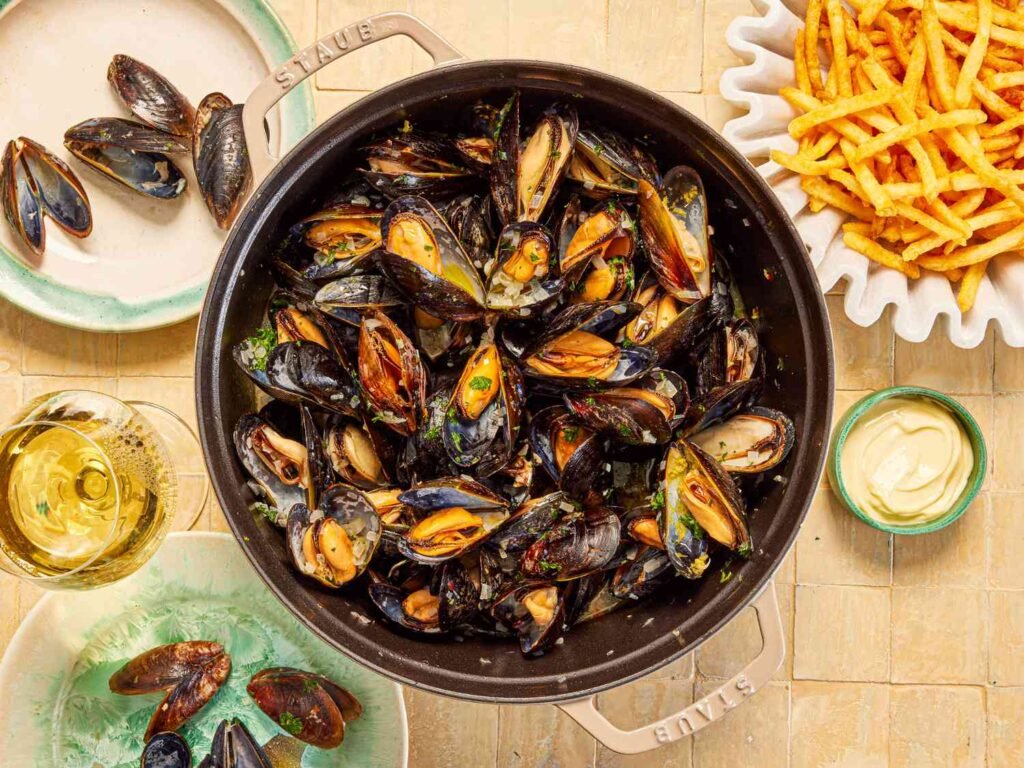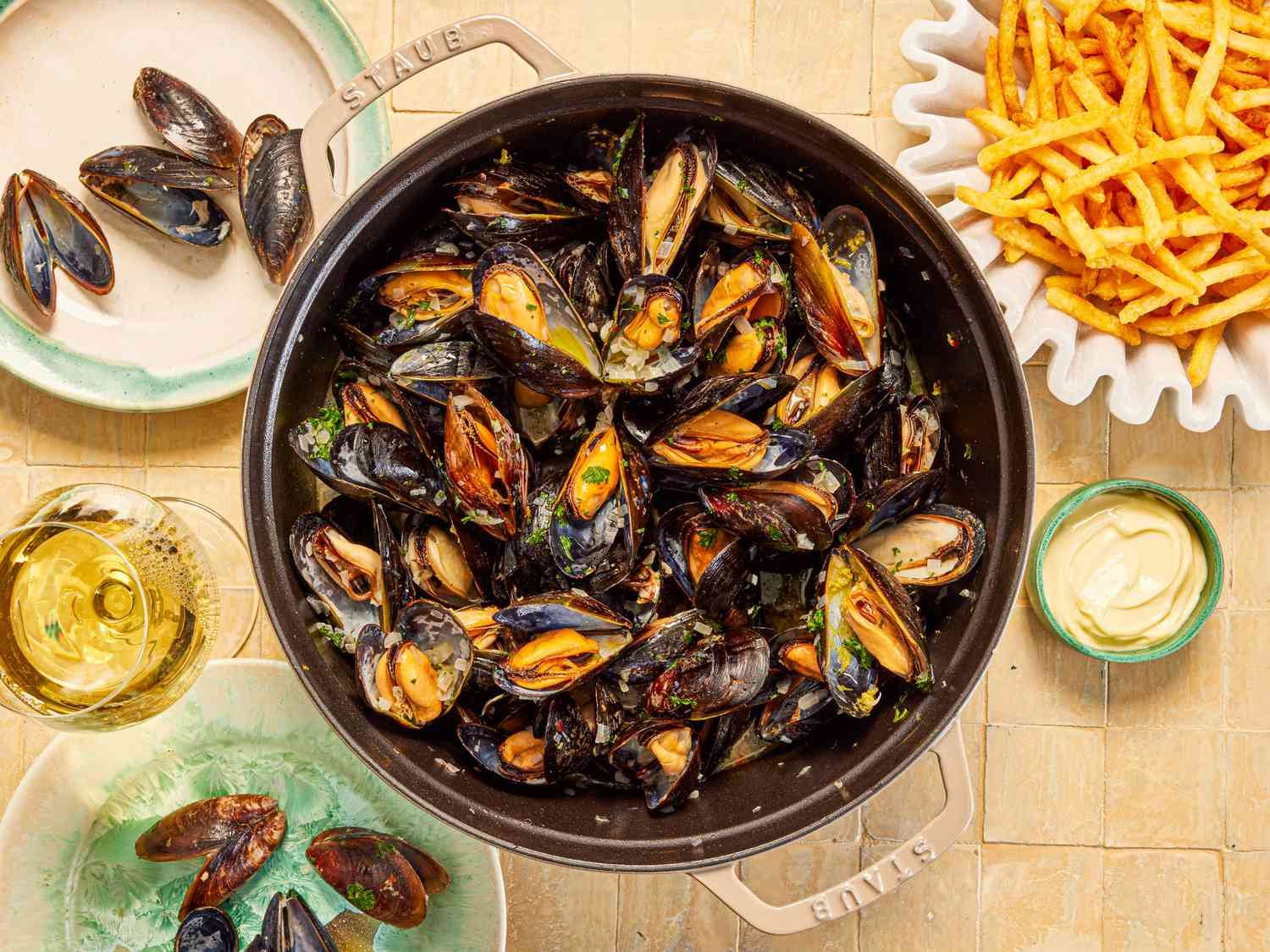
In the culinary landscape of Belgium, few dishes command the same level of adoration and reverence as Moules Frites. This iconic dish, featuring plump, succulent mussels bathed in a fragrant broth and served alongside crispy, golden fries, encapsulates the essence of Belgian gastronomy: simple yet sublime, hearty yet refined. Join us on a journey through the history, characteristics, and unique allure of Moules Frites, as we unravel the secrets behind this beloved culinary treasure.
The Origins of Moules Frites
The origins of Moules Frites can be traced back to the coastal regions of Belgium, where mussels have long been a staple of the local diet. Historians believe that the dish emerged in the late 19th or early 20th century, during a time when mussels were plentiful and inexpensive, making them an accessible source of sustenance for the working class.
Initially regarded as a humble peasant dish, Moules Frites gained popularity in the early 20th century as Belgium’s burgeoning tourism industry attracted visitors from around the world. As tourists flocked to the coastal towns and seaside resorts, they were introduced to the delights of Moules Frites, which quickly became a favorite among locals and visitors alike.
The Anatomy of Moules Frites
At its core, Moules Frites is a simple yet satisfying combination of mussels and fries, elevated by the addition of a flavorful broth and a sprinkle of fresh herbs. While the basic components remain the same, variations abound, allowing for a wide range of interpretations to suit different tastes and preferences.
The star of the dish is, of course, the mussels, which are typically steamed in a fragrant broth made with white wine, garlic, shallots, parsley, and sometimes cream. The mussels are cooked just until they open, ensuring that they remain tender and juicy, while the broth absorbs the flavors of the sea and the aromatics.
Accompanying the mussels are the frites, or Belgian-style fries, which are a culinary masterpiece in their own right. Made from high-starch potatoes that are double-fried to achieve a crispy exterior and fluffy interior, Belgian fries are a testament to the art of frying and a perfect complement to the briny sweetness of the mussels.
The Art of Moules Frites Preparation
The preparation of Moules Frites is a relatively simple affair, yet it requires a delicate touch and a keen understanding of the ingredients. Freshness is paramount when it comes to mussels, as they should be alive and tightly closed before cooking to ensure their quality and safety.
Once the mussels have been cleaned and debearded, they are steamed in a large pot with the broth ingredients until they open, which typically takes only a few minutes. Meanwhile, the fries are prepared by cutting potatoes into thick batons, soaking them in water to remove excess starch, and then frying them twice until golden brown and crispy.
To serve, the mussels are ladled into large bowls, along with a generous portion of broth, and garnished with fresh herbs such as parsley or chives. The fries are served alongside, hot and crispy, ready to be dipped into the flavorful broth or enjoyed on their own.
The Global Appeal of Moules Frites
While Moules Frites may have originated in Belgium, its appeal has spread far beyond the borders of its homeland, captivating palates and inspiring culinary creations around the world. From quaint brasseries in Paris to bustling seafood markets in Tokyo, Moules Frites can be found on menus in restaurants and cafes across the globe, testament to its universal appeal and enduring popularity.
Moreover, Moules Frites has inspired countless variations and adaptations in cuisines from around the world, as chefs and home cooks alike put their own spin on this classic dish. Whether it’s adding Asian flavors like lemongrass and coconut milk or incorporating Middle Eastern spices like cumin and coriander, the possibilities for innovation are endless, allowing Moules Frites to evolve and adapt to suit different tastes and preferences.
Moules Frites: A Celebration of Belgian Culture
Beyond its culinary prowess, Moules Frites holds significant cultural significance for the people of Belgium, serving as a symbol of national pride and identity. Throughout Belgium, Moules Frites is celebrated as a quintessentially Belgian dish, enjoyed by people of all ages and backgrounds as a beloved part of the country’s culinary heritage.
In fact, Moules Frites is so deeply ingrained in Belgian culture that it has its own dedicated day of celebration: “La Fête de la Moule” or “Mussels Day,” which takes place annually in September. On this day, people gather in towns and cities across Belgium to enjoy Moules Frites in all its glory, accompanied by live music, street performances, and festive celebrations.
Conclusion: A Culinary Treasure of the Belgian Coast
In the annals of culinary history, few dishes can rival the simple yet sublime pleasures of Moules Frites. From its humble origins on the Belgian coast to its global acclaim and enduring popularity, Moules Frites embodies the essence of Belgian gastronomy: fresh, flavorful, and unapologetically delicious.
As we celebrate the legacy of Moules Frites, let us savor the flavors, textures, and traditions that make it a beloved culinary treasure. Whether enjoyed in a seaside bistro in Belgium or recreated in the comfort of your own kitchen, Moules Frites invites us to indulge in the simple pleasures of good food, good company, and the joys of life by the sea.










